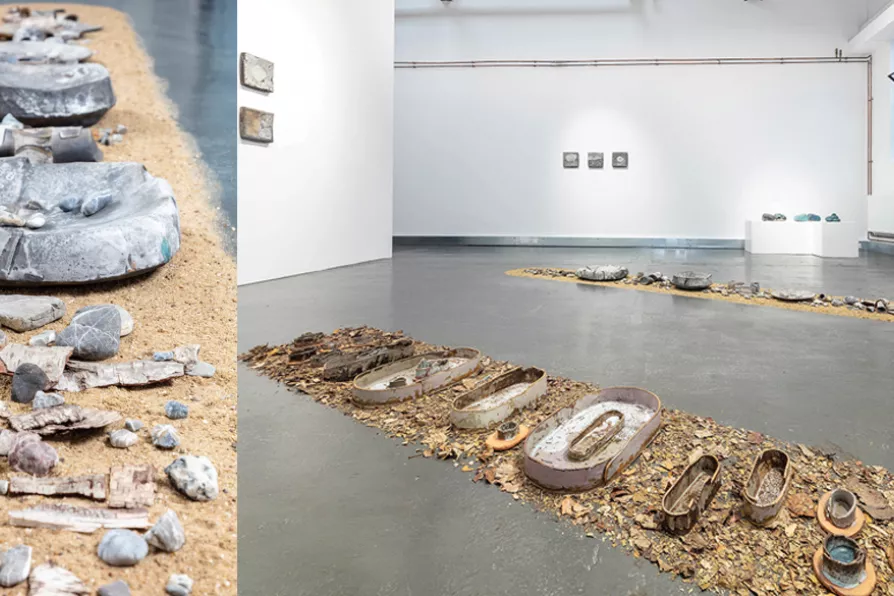RICHARD MURGATROYD enjoys a readable account of the life and meditations of one of the few Roman emperors with a good reputation

 (L to R) Part of the Road Travelled (detail), 2022 – ongoing, 33 pieces of stoneware; Collecting the Raindrops, 2021, 23 ceramic pieces and dried leaves
[Richard Ivey courtesy of the artist and Elizabeth Xi Bauer Gallery]
(L to R) Part of the Road Travelled (detail), 2022 – ongoing, 33 pieces of stoneware; Collecting the Raindrops, 2021, 23 ceramic pieces and dried leaves
[Richard Ivey courtesy of the artist and Elizabeth Xi Bauer Gallery]
Marta Jakobovits
Look and See
Elizabeth Xi Bauer Gallery, London
WHO hasn’t a beachcomber lurking inside that’s released, like Alladin’s genie tempting with serendipitous wishes, as soon as our bare feet touch marine sand somewhere?
Romanian Marta Jakobovits imbues fact with wonder. Her ceramic work, despite its formal rigour is entirely emotive and poetic.
The visual association with depositions brought by the sea, or an imaginary archaeological dig where “unearthed” artefacts, neatly lined out, pique our curiosity and invite childlike squatting for a closer inspection.
Such is the installation Part of the Road Travelled, 2014–2016, consisting of 33 pieces of ceramics, sand and stones which set the imagination flying.

GORDON PARSONS is enthralled by an erudite and entertaining account of where the language we speak came from

PETER MASON is enthralled by an assembly of objects, ancient and modern, that have lain in the mud of London’s river












